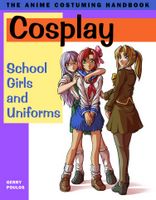

“It’s so interesting to see how things turn out. I can’t get enough of them. This book is fantastic. I think it’s my best collection ever! That’s what I feel. There’s still a restless hunger, a sort of desperation towards photography, towards myself.”
SUBWAY LOVE
by Nobuyoshi Araki
Today we are photographed everywhere we go, from the many mobile phones with built-in cameras to the security cameras in every corner. Despite this, we continue to sneak a “private” moment when we think no one is looking (or cares): picking our noses, taking naps, or shedding tears.
But that wasn’t the case in 1960s Tokyo when one of the few cameras aboard the subway was hidden in the lap of a young commuter, Nobuyoshi Araki. Internationally famous today, especially for his portraits of women in bondage, Araki had to satisfy his early urges to photograph by using a spy cam on his way to and from work at Japan’s leading ad agency. A collection of the results are now available in the book, Subway Love, available from Stone Bridge Press in April 2006.
“People would say to me all the time, ‘What a waste. Commuting to work is hardly the greatest subject out there, is it?’” said Araki. “I disagree: I think the subway makes a fabulous studio.”
This collection reveals contact sheets as well as enlarged images of Araki’s choosing, all printed on glossy photo paper. Over 200 black & white images capture the 60s and 70s within Tokyo’s subway system, which the young commuter saw as a “prisoner transport car.”
However, Araki still sees the “Subway Love.”
“I don’t think the pictures project a sense of loneliness. Everyone’s alive; everyone’s okay. They’re not alone in this world. They’re gonna meet with someone somehow. It’s not about love, but some sort of encounter is just around the corner.”
Of course, Japan’s most celebrated and controversial photographer can no longer anonymously use a spy cam on the subway, and on the street is more likely to BE photographed despite never leaving home without a camera or two. His problem with it, however, is not exactly about privacy.
“People are always taking my photo with their mobiles. I don’t mind, but then they go and send it off to their boyfriend or girlfriend. That pisses me off, I tell you. It’s not that I’m anti-digital...It’s not right for shadows to become bright. And it’s the same with our emotions: we may have all sorts of faults, but we all have good points, too. Taking a picture makes a momentary connection between two people: it’s a marriage proposal that lasts a microsecond.”
Subway Love, by Nobuyoshi Araki is a publication of Stone Bridge Press. It will be released in April 2006, retailing for US$40. It is 228 pp., paper, 10” x 8” with 200+ b&w photographs. ISBN-10: 4-89684-140-9, ISBN-13: 978-4-89684-140-4.














